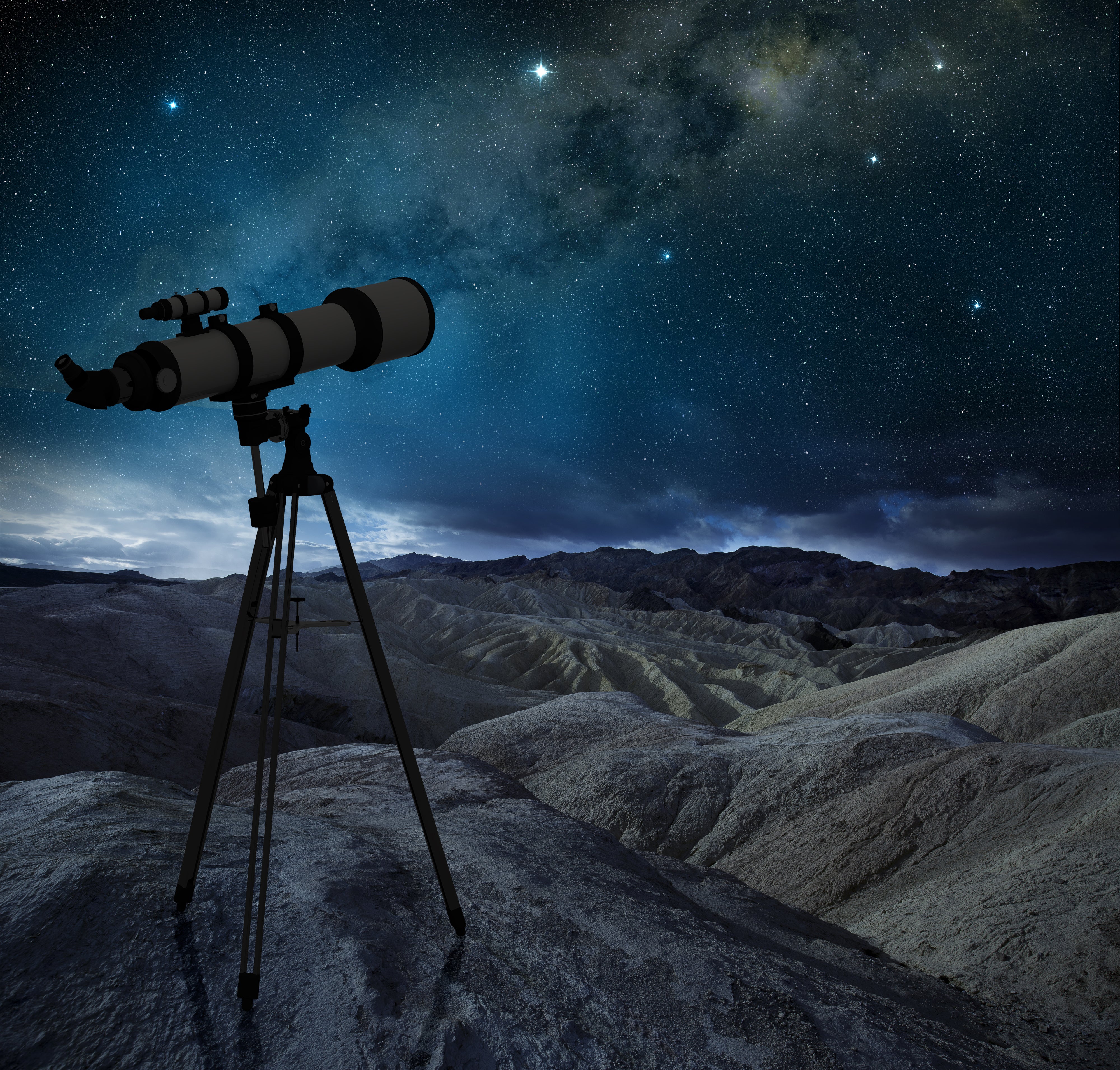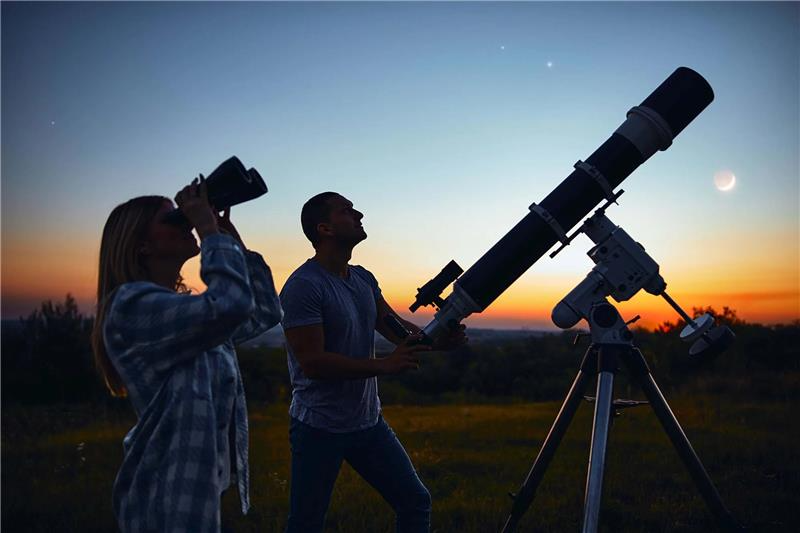Starting your astronomy journey is exciting — but the telescope alone is just the beginning. To get the most out of your stargazing sessions, you’ll want a few extra tools that improve clarity, stability, and overall viewing experience. This guide covers the best telescope accessories for beginners and explains exactly how they can elevate your night sky adventures.
Why Accessories Matter for Beginners
A telescope’s main job is to gather light and magnify distant objects. But without the right accessories, you might struggle with comfort, stability, or image quality. The right gear can:
- Enhance detail and sharpness in your view.
- Make setup faster and easier.
- Expand the range of celestial objects you can observe.
- Protect your eyes and your telescope from damage.
- Improve comfort during long observation sessions.
Accessories are like tools in a toolbox — each has a specific job that can make your stargazing experience smoother and more rewarding.
1. Eyepieces – Your Window to the Stars
Eyepieces are where your eye meets the telescope. The right eyepiece can completely change what you see, from the Moon’s craters to Jupiter’s bands.
Eyepiece Types to Know
- Plössl Eyepieces – A versatile, affordable option that works well for most beginners, offering a balanced field of view and sharp images.
- Wide-Angle Eyepieces – Ideal for observing large celestial objects, such as the Moon or star clusters, without constant repositioning.
- Zoom Eyepieces – Allow you to adjust magnification without swapping eyepieces — great for scanning and then zooming in on a target.
Tip: Most telescopes come with only one or two eyepieces. Adding a few quality options can greatly expand your observing capabilities.
2. Barlow Lenses vs Diagonals – What’s the Difference?
When researching the best telescope accessories for beginners, you’ll often hear about Barlow lenses and diagonals. While they attach to the same area of your telescope, they serve different purposes.
- Barlow Lenses – These increase your telescope’s magnification, usually by 2x or 3x, without requiring more eyepieces. For example, a 25mm eyepiece that gives you 50x magnification would deliver 100x with a 2x Barlow.
- Star Diagonals – These change the viewing angle, allowing you to look comfortably into the telescope when it’s pointed high up. They also correct image orientation in some telescope types.
Beginner Advice: A Barlow lens is perfect for planetary and lunar viewing. A diagonal is essential for comfort during extended sessions.
3. Solar Filters – Safely Observing the Sun
Observing the Sun is one of the most awe-inspiring experiences in astronomy — but it’s also dangerous without proper protection. Looking directly at the Sun through a telescope without a certified filter can cause permanent eye damage.
A high-quality solar filter will:
- Block harmful UV and infrared radiation.
- Reduce brightness to safe levels.
- Reveal sunspots, solar granulation, and other fascinating details.
Safety Warning: Never use cheap, homemade, or improvised filters. Always purchase from reputable brands and ensure the filter covers the objective lens (not just the eyepiece).
4. Guiding Scopes – For Tracking and Photography
If you’re curious about astrophotography or want to track dim celestial objects, a guiding scope can be invaluable.
- How It Works: A guiding scope attaches to your main telescope and uses a secondary optical system to make tiny adjustments to keep your target perfectly centered.
- Why It Matters: Long-exposure astrophotography demands precise tracking. Even a small drift can blur stars and ruin images.
Beginner Tip: For purely visual observing, you can skip this accessory at first. But if you see yourself taking photos of galaxies or nebulae in the future, investing early in a guiding setup will save you frustration later.
5. Tripod & Mount Tips – The Foundation of Stability
A telescope is only as good as its stability. Shaky images from an unstable tripod can make stargazing frustrating.
Mount Types
- Alt-Azimuth Mounts – Simple, intuitive movement (up/down and left/right). Ideal for beginners and casual observing.
- Equatorial Mounts – More complex, but designed for smooth tracking along the Earth’s rotation axis. Essential for serious astrophotography.
Tripod Tips
- Material Matters: Aluminum is lightweight and affordable; steel is heavier but far more stable.
- Vibration Pads: Small, inexpensive pads placed under tripod legs can greatly reduce image shake.
- Height & Comfort: Adjust tripod height so you can observe comfortably without crouching or overreaching.
Beginner Advice: Always set up on solid ground, avoid soft surfaces, and fully extend tripod legs for maximum stability.
6. Bonus Accessories for Extra Comfort & Protection
While the main tools above are essential, a few extra accessories can make your astronomy nights even better:
- Red Flashlight – Lets you see your gear without destroying your night vision.
- Observation Chair – Adjustable chairs keep you comfortable during long sessions.
- Carrying Case – Protects your telescope and accessories during transport.
- Dew Shields – Prevents moisture from condensing on your optics during humid or cold nights.
- Lens Cleaning Kit – Keeps optics free from dust and smudges without scratching.
Putting It All Together – A Beginner’s Starter Kit
If you’re just starting out, here’s a practical accessory checklist:
- 2–3 quality eyepieces for different magnifications.
- Barlow lens for doubling or tripling your magnification range.
- Star diagonal for comfortable viewing.
- Solar filter for safe Sun observation.
- Stable tripod and suitable mount for steady, shake-free images.
- Optional guiding scope for astrophotography enthusiasts.
- Comfort & protection gear like a red flashlight, chair, and carrying case.
By starting with this setup, you’ll cover most observation needs without feeling overwhelmed by unnecessary gear.
Caring for Your Telescope Accessories
Your accessories are an investment — and a little care goes a long way toward keeping them in great condition:
- Store lenses in a dust-proof case or pouch.
- Avoid touching glass surfaces with your fingers.
- Use a soft brush or microfiber cloth for cleaning.
- Keep electronic parts (like guiding scopes) dry and stored indoors.
- Avoid exposing accessories to extreme heat or cold for prolonged periods.
Conclusion – Setting Yourself Up for Success
The best telescope accessories for beginners aren’t just about fancy upgrades — they’re about making astronomy easier, more comfortable, and more rewarding. Whether you’re exploring the Moon’s rugged surface, spotting Jupiter’s moons, or photographing distant galaxies, having the right gear from Elite Telescopes means you’ll spend less time struggling with your equipment and more time enjoying the wonders of the universe.
By starting with essential items like quality eyepieces, a sturdy mount, and proper filters, you’ll not only improve what you see but also how much you enjoy every observing session.




Share:
7 Reasons to Choose Elite Telescopes for Your Stargazing Needs
How Does a Smart Telescope Work? A Beginner’s Guide